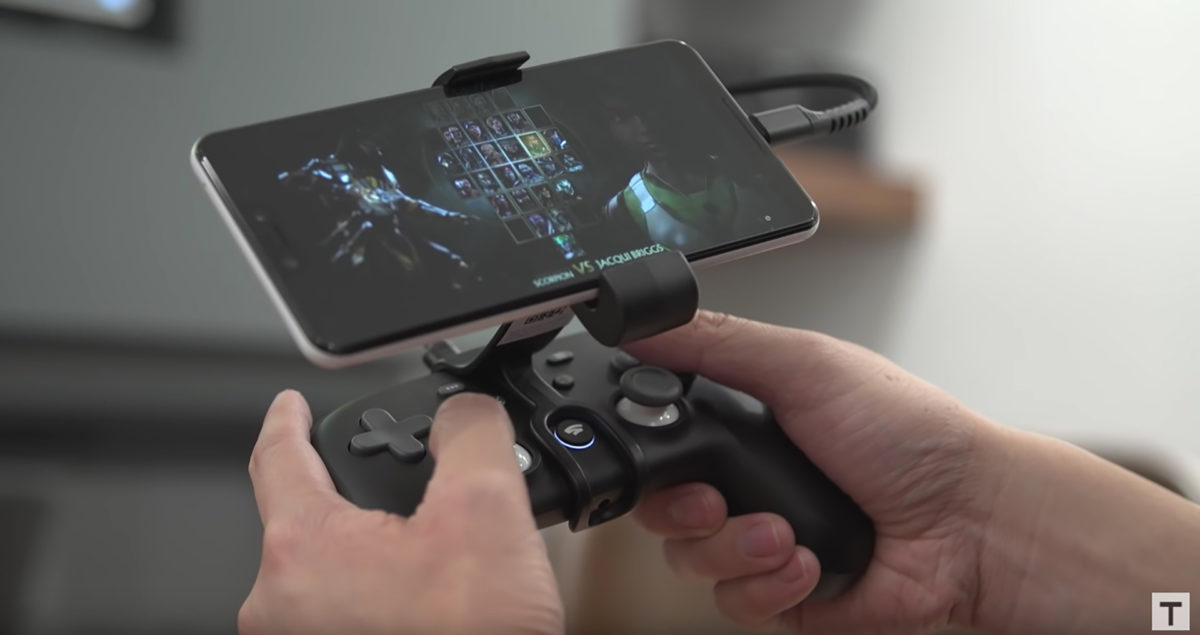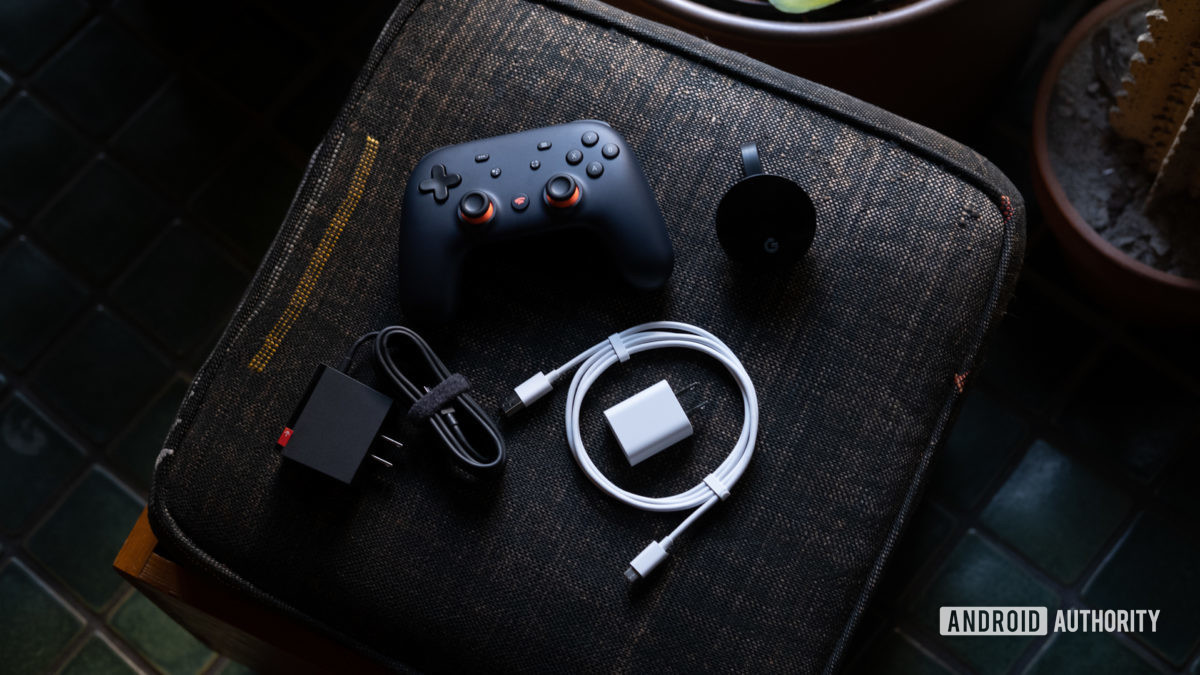
When Google first announced its cloud gaming service Stadia, we had a lot of high hopes. A “Netflix of games” that allows you to play on all your devices anywhere? Sign us right up! Of course, we quickly realized Stadia is not a “Netflix of games” and did not allow you to play on all your devices (at least not at first).
However, with the rollout of 5G networks across the United States, the possibility of playing anywhere is real. To test this out, AT&T reached out to us about trying Stadia on its 5G network. AT&T supplied me with a full mobile Stadia kit, including an official Stadia Premiere Edition (controller and Chromecast Ultra), a Stadia Pro subscription, a Google Pixel 4a 5G with an AT&T SIM card, and even a Power Support Claw to tie everything together.
I live in New Haven, CT, which has pretty robust AT&T 5G service. Can it handle streaming gameplay from Google’s servers thousands of miles away? The answer is complicated.
Stadia on 5G: Find a spot and stick to it

The first thing I did when I got the Stadia kit from AT&T was get everything set up. I connected all the gear to my home Wi-Fi network, activated my Stadia Pro subscription, and found a game to play (Chronos: From the Ashes). It only took me about 15 minutes before I was streaming Chronos to the phone and having a fine time playing it.
See also: The very best games on Google Stadia
Of course, the whole reason I got the kit was to test Stadia on 5G, not my home Wi-Fi network (which I humbly admit is wicked fast). I turned off Wi-Fi on the Pixel 4a 5G and saw the little 5G icon in the top right corner. I started up Chronos again and found the game to be basically unplayable. Check out the video below to see the dropped frames and stuttering:
Obviously, that result points to AT&T’s network just not being fast enough for Stadia, at least not at my home. Check out the speed test results below to see what I mean:
But hey, why would I ever be using 5G service at my house anyway? To give this a true test, I needed to head out into the world. I took a trip into downtown New Haven in the heart of Yale University and tried my luck out there. For the record, downtown is a five-minute drive from my house.
The speed tests I got downtown show a world of difference. Check them out here:
With those faster speeds, Chronos: From the Ashes played as well as it did on my home Wi-Fi. Framerates were smooth, controller lag was minimal, and everything looked crisp. I even sat in the passenger seat while my girlfriend drove us around, and had no issues playing the whole time.
Clearly, Stadia on 5G is totally possible, but you need to find an area with good service and stick with it.
It’s too bad about Stadia’s mobile issues, though

In the previous section, I mention how I switched off Wi-Fi on the Pixel 4a 5G and played Stadia on 5G at my home. That isn’t the whole story, though. You see, the official Stadia controller itself connects to Wi-Fi to reduce input lag. That means if the controller and the screen (in this case, the Pixel 4a 5G) aren’t on a Wi-Fi network, things don’t work properly.
See also: Google Stadia vs GeForce Now
Now, there are a few ways around this. The first is pretty obvious, which is to ditch the Stadia controller for something else, such as an Xbox or PlayStation controller. Those connect to your phone with Bluetooth, which introduces some input lag but at least actually works. Confusingly, the Stadia controller does work with Bluetooth, just not when playing Stadia games. Seriously.
Another solution would be to use a cable and wire the phone and the Stadia controller together. This has the advantage of keeping input lag low, but the disadvantage of needing a cable.
Google doesn’t make Stadia very easy to use on mobile networks.
A trickier option would be to use the phone as a hotspot and play on a different screen. A tablet, laptop, or even a second phone would make this possible.
The overarching problem here, though, is that none of these solutions are obvious. The Stadia controller does not come with a USB-C to USB-C cable, so it’s not apparent you would need one to use it on mobile. Using a secondary controller — or worse, a secondary screen — seems to negate the whole purpose of using the Stadia controller at all.
Additionally, the Stadia app itself doesn’t help you out with this. When I tried to use the controller wirelessly on the AT&T network, it didn’t say, “Hey, you’ll need to grab a USB-C cable to do this.” It just flat-out failed and said I needed to connect it to Wi-Fi. That’s not at all helpful, Google.
Stadia works on 5G under specific conditions

Despite Stadia’s inherent mobile problems, this test shows that the service works well both on Wi-Fi and on 5G, assuming you are playing in a specific scenario:
- You are in an area where 5G service is active and strong.
- You are relatively stationary in that area.
- The large amount of data Stadia consumes isn’t an issue for you (i.e. you have unlimited data). I saw Stadia consume about 100MB of mobile data per minute.
If you don’t meet all three of those criteria, you might have a bad time with Stadia on 5G.
Related: What is cloud gaming?
Unfortunately, the dream of being able to take a train and stream your game on a 5G network for the ride isn’t realistic at this point (that’s where a Steam Deck could come in handy). 5G just isn’t ubiquitous enough, so you’d face outages every few minutes. Hanging at the airport or a coffee shop and being able to game on 5G, though, is certainly possible — as long as you can afford unlimited 5G data.
Of course, until Google makes it simpler for official Stadia gear to work with mobile networks, it’s never going to be truly convenient.